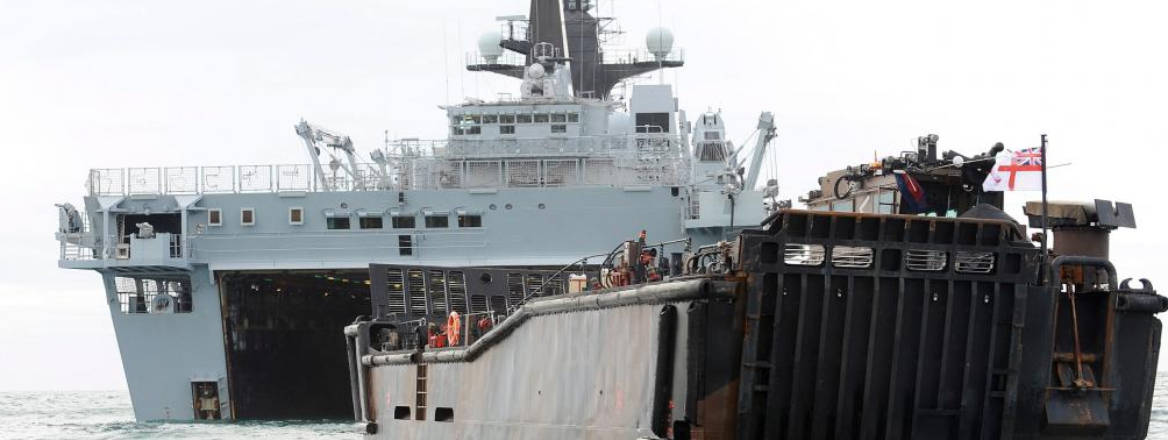Requirements for the UK’s Amphibious Forces in the Future Operating Environment
This paper outlines the role that littoral areas will have in the Future Operating Environment and the strategic requirements that will drive the development of the littoral strike concept and the Future Commando Force.
Executive Summary
As the Royal Navy and Royal Marines contemplate their future concepts for operating in littoral environments, they are faced with two seemingly divergent trends. On the one hand, the clustering of states’ economic assets and population centres in littoral areas will make the ability for the Joint Force to impact the littoral ever-more critical over the course of the coming decades. This is particularly true as the emphasis of interstate competition shifts from a 20th-century focus on total wars for maximal ends towards persistent competition punctuated by limited positional warfare. Seizing and holding critical areas in a short timeframe will be vital to securing a favourable negotiating position following conflicts that are – at least in terms of their high-intensity kinetic phase – limited in duration and strategic ends. This in turn will impact a state’s competitive position when combatants transition back to persistent sub-threshold competition. The clustering of vital economic infrastructure and countries’ demographic centres of gravity in littoral areas will make the ability to achieve sufficient control of key points in the contested littoral particularly salient in this form of limited aims warfare. Simultaneously, however, the maturation of precision-strike capabilities and ISR systems that enable them, along with the proliferation of technology associated with the concept of anti-access area denial (A2AD), will make traditional amphibious assaults and ship-to-objective manoeuvres ever-more difficult. As such, the Joint Force needs to affect the littoral to prevail, but will find approaching the littoral increasingly perilous.
To resolve this problem, this paper proposes a new concept of operations to serve as a baseline against which potential force structures supporting the littoral strike concept can be tested. The paper’s four central propositions are:
- The emphasis of littoral operations must shift from manoeuvre inland to positional warfare which aims to secure and control key nodes within the littoral zone.
- Operations within the littoral must balance traditional concerns with seizing ground with efforts to constrain an opponent’s freedom of action in littoral regions and thus exercise effective control.
- Operating in littoral regions will require the current exclusive emphasis on big deck assault ships to be modified in favour of a scalable force capable of operating within an opponent’s anti-access bubble in order to degrade it and thus enable the insertion of heavier follow-on forces.
- The concepts which guide littoral strike must be conceptually focused on enabling access for the Joint Force to exploit, and thereby achieve strategic effect.
Utilising a range of both primary and secondary sources, this paper seeks to outline the role of the littoral in the Future Operating Environment and the strategic requirements that will drive the development of the littoral strike concept and the Future Commando Force. The paper then outlines the broad contours of a baseline force that might support these requirements, and articulates some of the kinds of enablers it might need.
WRITTEN BY
Dr Sidharth Kaushal
Senior Research Fellow, Sea Power
Military Sciences
Dr Jack Watling
Senior Research Fellow, Land Warfare
Military Sciences



